Posted By

Luca
on 2024-02-26
03:55:16
 |  Re: Question about music Re: Question about music
@gerliczer: heh, that folder has awaited for a request for so long time, until we decided that all in all it would have been quite easy to watch into the players' codes to find how to work'em out one by one  Btw @Haplo, if you really feel like reusing an existent music, it's truly an easy task! Let's see 3 case studios. Btw @Haplo, if you really feel like reusing an existent music, it's truly an easy task! Let's see 3 case studios.
CASE 1: a generic player
Load the HVTC file in YAPE and activate the QUICK DEBUGGER (Shift+F9) in order to immediately see where the program is running in memory in that precise moment. Search around that address, and you'll find the most simple code of the world, with some initialization in the beginning, and the player(s) routine into the scanline checked code.
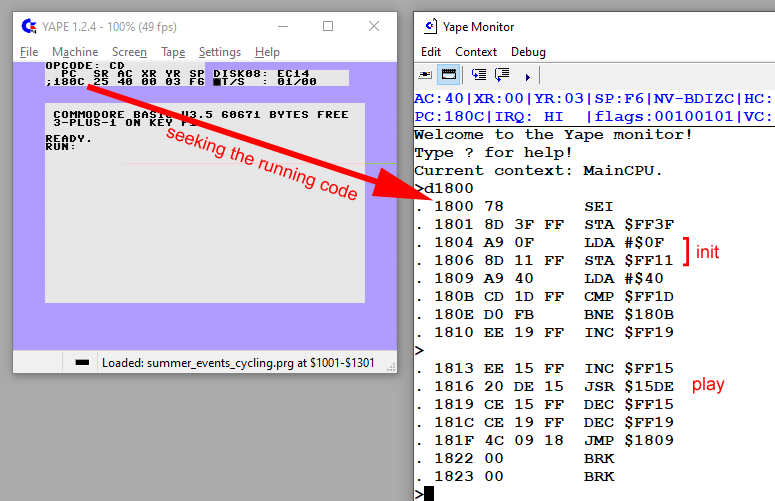
Where is the real music file? Oh well, it's in the zone between the 00 FF 00 FF's representing the untouched memory, search for it in MONITOR via YAPE.

And in the same way, search for the end of the useful memory block.

The generic music files could be very scattered in different codes into the memory, especially if they come from ancient games, quite rare in the modern era, so keep in count that there could be large empty spaces, which I regularly have zeroed for cleanness and packing needs.

CASE 2: Knaecketraecker
Let's see some proper players now. Knaecketraecker has an initialization address, a "thick" address which is a sort of pre-player, and a play address. They are veeery clear if you save the naked file.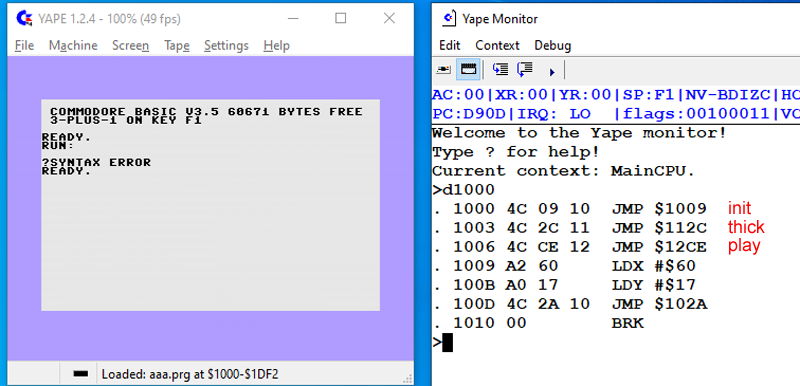
...but most of the times, we saved those tunes with their own player, which is an option of the tracker itself, and that player doesn't use the veeery cleeean code declaring those memory locations, but they're easily recognizable in the player's code itself.
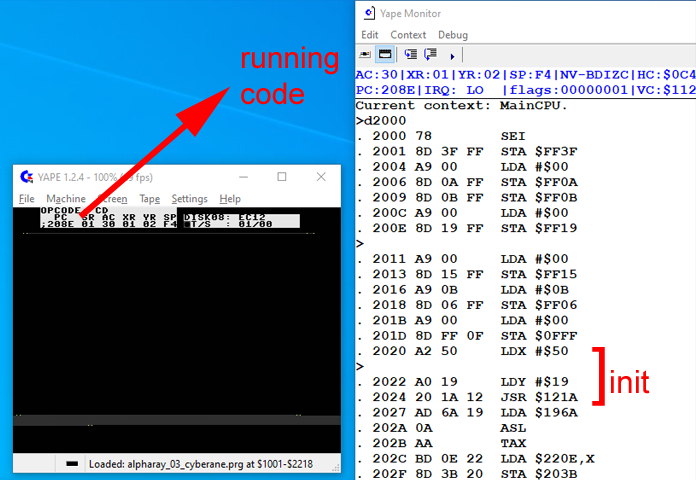
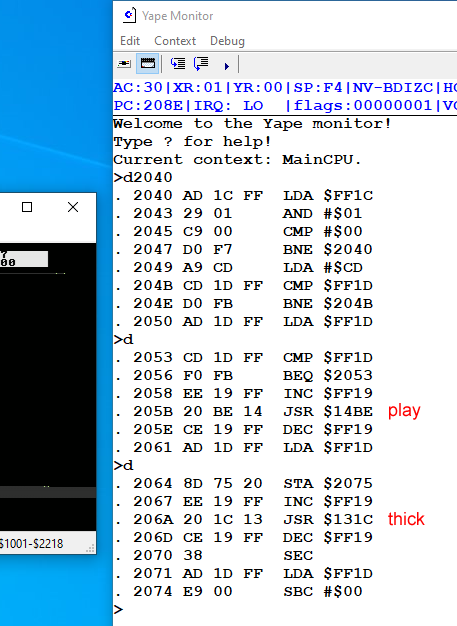
They also are generally unpacked, so you can read directly the memory zone involved, YAPE writes it right under the lower corner.
CASE 3: TEDzakker
TEDzakker too saves unpacked files which are very explicit.
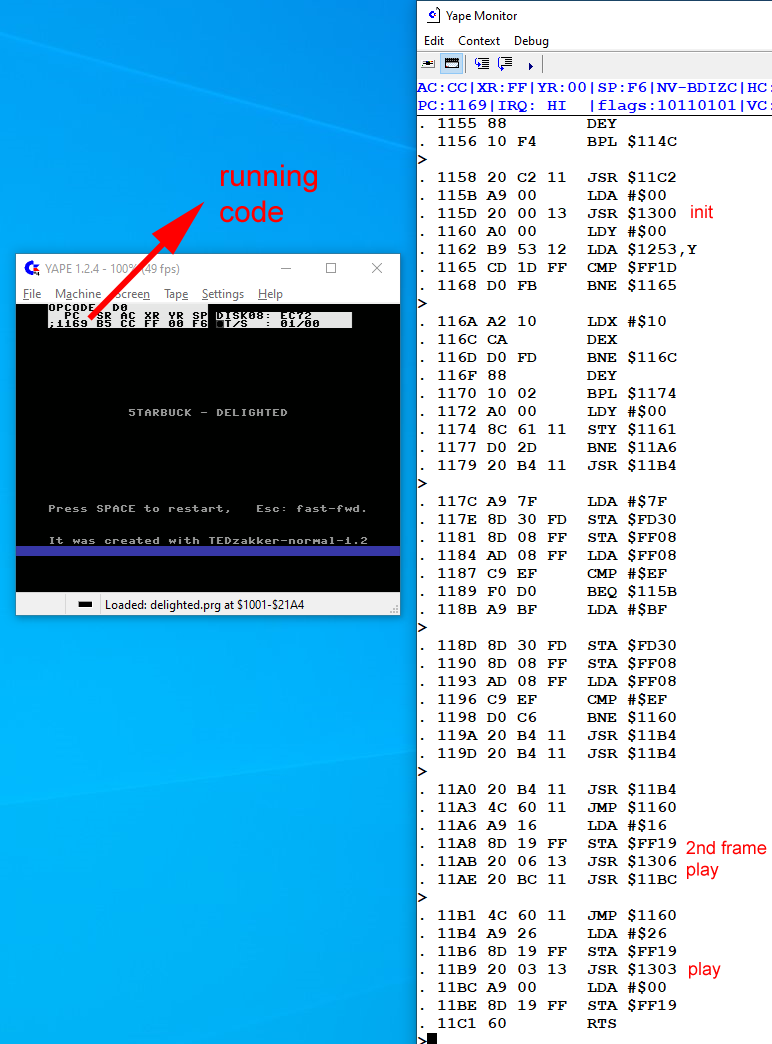
As you can see, the useful addresses are there, ready to be used just like a SID. Moreover, how to use those key addresses has been well explained in any tracker's note, so no problem at all. The useful memory block is again the unpacked declared memory
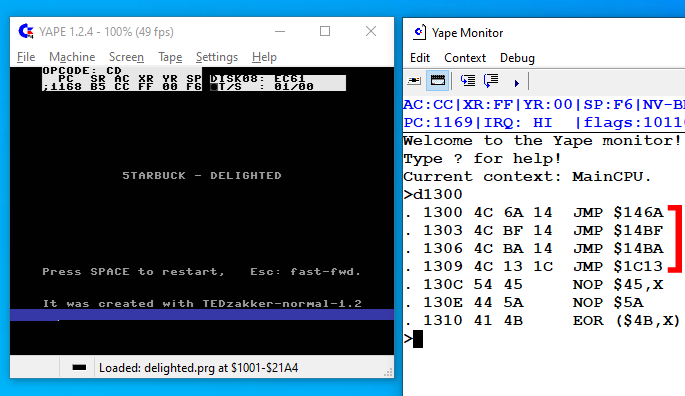
...and for any hint, we are here as ever!  |